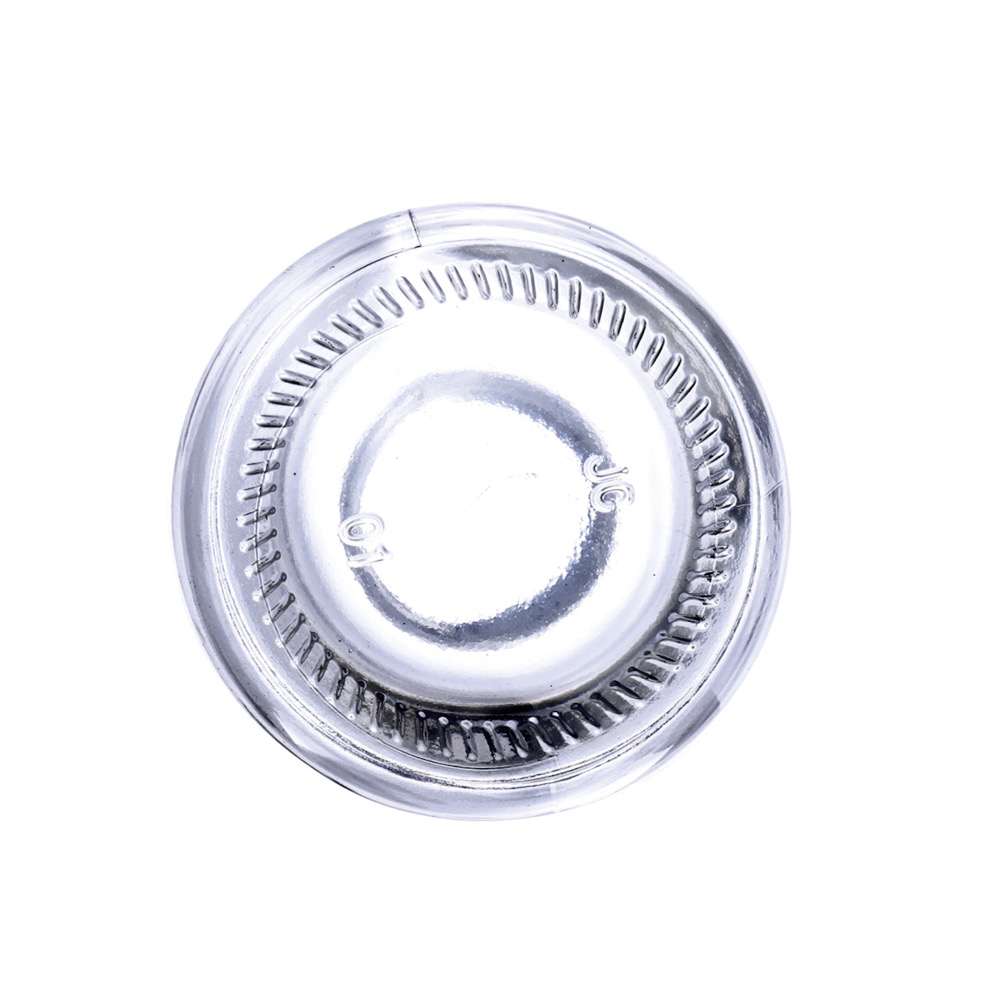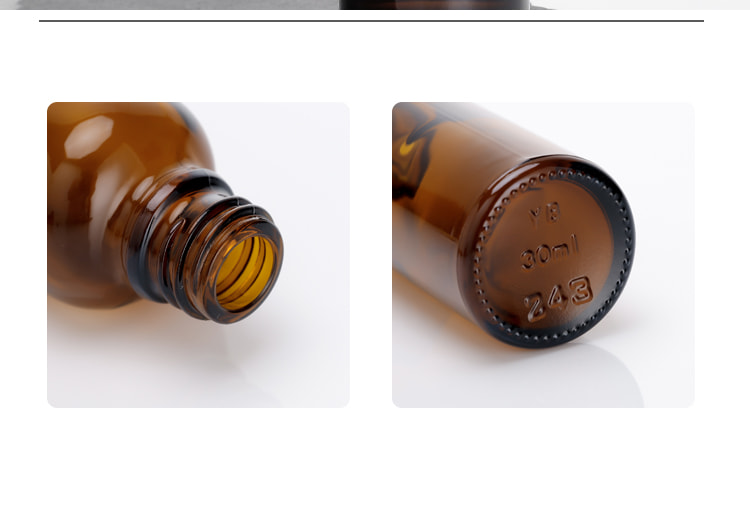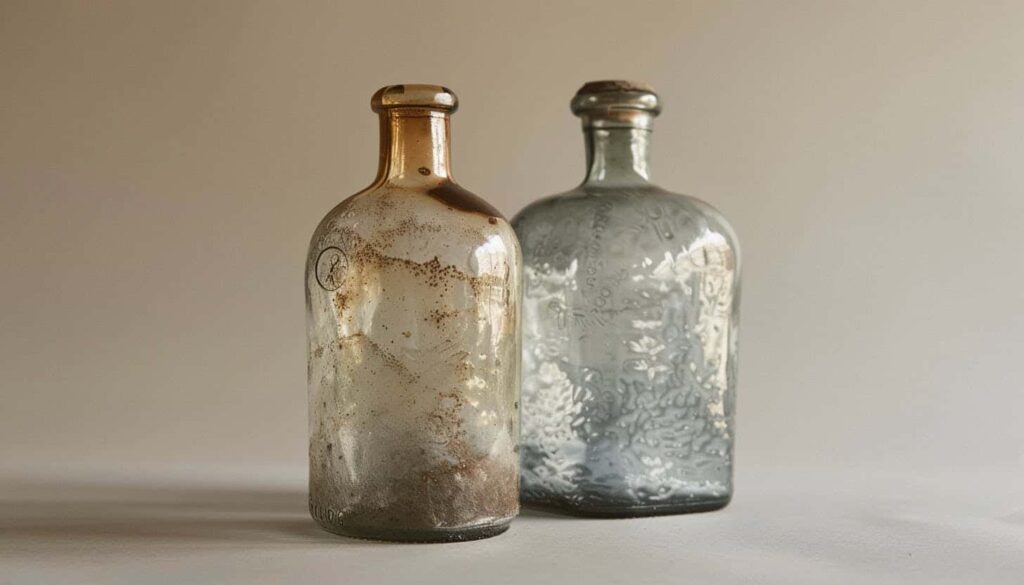Contact us now, we are always here for service
Ameri glass bottles, Since 1968. Your custom glass containers & stock glass container items wholesale specialist. Our customer service is always online 24/7/365.
Follow Us:
How to Tell How Old a Glass Bottle Is (Age of Glass Bottle)
2024-04-11 13:53:48Table of Contents
Glass bottles fascinate collectors and historians, offering insight into history through their distinctive shapes, colors, and markings.
Determining an age involves noting its manufacturing techniques, styles and markings over time – initially hand blown bottles were hand produced; later mass production techniques left distinctive features on bottles such as thickness of the glass body mold seams pontil marks that can help date them more precisely.

Understanding the age of glass bottles is invaluable as historical artifacts from different eras and cultures. Being able to determine their age allows us to appreciate their historical importance, their inherent worth, and verifying authenticity – especially as older bottles usually dictate specific preservation needs based on age alone. Glass bottles also serve as educational resources allowing archeological dating research as well as weaving together patterns of past civilizations into our history tapestry, making recognizing their age an indispensable skill among collectors, historians, and antique enthusiasts.
Examine the Base
One of the key steps for dating an antique glass bottle accurately is carefully inspecting its base. Look out for any markings such as numbers, letters or symbols which could provide important clues as to when this object was manufactured.
Carefully examine the overall shape and style of the base. Bottles made prior to 1870s tend to feature indented bases with pontil marks from glassblowing processes that leave an indentation mark, often leaving scarred circles behind on their surfaces. By 1870s most bottles featured smooth flat bases made in molds.
Be on the lookout for numbers embossed on the base; these will often represent the bottle mold number used by glassmakers for tracking molds; higher numbers typically denote newer molds. Numbers can also serve as date codes – for instance bottles embossed with “58” may have been produced during 1958.

Studying an antique bottle’s base characteristics is often one of the best starting points for dating it. Looking at mold seams, markings and shape gives a good indication of when further research should begin; with practice an experienced collector may quickly pinpoint an approximate era simply by inspecting its characteristics.
Attribute an Age by Examining Mold Seams
One of the easiest and most accurate ways of dating an antique glass bottle is examining its mold seams, which form at each junction between individual parts in its mold.
Before 1870, most glass bottles were free-blown using a blowpipe and pontil, without using molds – so any bottles with no side mold seams likely date from before this year. Bottles produced between 1870 and 1910 usually display mold seams running along their neck from top to bottom, either along its side, shoulder or circling it – an indicator that this bottle was made using a cup-base mold.
After 1910, bottles were typically machine manufactured using the Owens Automatic Bottle Machine. These bottles feature mold seams running along their lips and up into their top surfaces; as well as horizontal mold seams running encircling the neck and shoulders of their bottles.
Studies of mold seams can provide invaluable clues as to their age. No mold seams indicate pre-1870s manufacturing; side seams up to the neck suggest 1870-1910 manufacture; while seams over the lip reveal post-1910 dates of production. Looking carefully at mold seams will allow one to narrow down this date range significantly.

Checking the Bottle’s Lip and Closure
A bottle’s lip shape and type of closure provide crucial clues as to its age. Early glass bottles featured relatively crude lips due to ineffective glassblowing processes; by mid-19th century these were more tapered and finished; eventually by early 1900s most bottle lips had consistent tapered finishing tooled onto their interior faces.
Closure styles also changed with technological development over time, such as cork stoppers and closures being popular in the 18th and 19th centuries, but screw-top closures became widespread by early 1900s; other closures like crown caps and lightning stoppers also gained use during this period.
So a bottle with tapered lips and either screw top or crown cap closure probably dates from the early 20th century or later; while an early 19th century bottle would feature more crudely rounded lips and cork stopper closure. Examining both lip style and closure style can provide valuable clues as to its date range for antique bottles. Finally analyzing color and clarity analysis could further narrow your date ranges for antiquities bottles.

Analyze the Color and Clarity
Color and clarity can provide useful indicators about bottle age. Before the late 19th century, most bottles were created using naturally colored glass or tinted with various additives like manganese dioxide or selenium; these techniques resulted in shades of amber, green, blue or brown glass bottles.
Claret-colored glass bottles first emerged widely beginning in the 1870s due to innovations in glass manufacturing and purification technologies.

Certain colors also rose or declined in popularity over different timeframes: for instance green was once popular but has since fallen out of fashion in modern eras like our own.
– Aqua or light green glass was widely utilized during the 19th century.
– Darker shades were more often utilized for wine and spirit bottles during this era;
– Moreover, clear flint glass became popular during its time period as well.
– Colored glass was particularly fashionable during the late 19th century.
So its color alone can provide a good indication of when an antique bottle dates from. Just beware of later reproductions which try to imitate older bottles by trying on similar hues; mark and code analysis can give additional clues for further dating information.
Look for Marks and Codes
Antique glass bottles often bear stamps or codes that provide information about when and by whom the bottles were manufactured.
Patent numbers can provide valuable clues as to the age and provenance of bottles made prior to 1900, especially those produced prior to 1900 where bottle makers would emboss patent numbers on the bottle’s base or other areas – this number can then be cross-referenced with patent records to establish when that design or manufacturing method was first patented, providing a date range as to when production likely occurred.

Example 1: An embossed bottle bearing “PAT NOV 30TH 1858” indicates it could only have been produced post-1858 when its patent was granted, thus providing insight into who created, manufactured and distributed this particular bottle. Diving deeper into patent records would reveal more specifics such as inventor details, geographic origin and bottle types associated with that number.
Additionally, antique bottles often display the manufacturer’s initials or trademark somewhere on them – this allows researchers to locate when this company was operating with that trademark and why.
Marks from bottles made after 1900 can be invaluable, when patent numbers became less prevalent. A bottle with “AGW” may indicate its maker, Adolphus Glass Works of early 20th-century Philadelphia.
Researching old glassmaking company records and trademark databases can assist greatly with dating antique bottles from specific eras or decades. Manufacturer logos or marks on bottles also indicate where geographically they were produced.
Make sure that when inspecting an old glass bottle that you inspect its entire surface carefully for any etched, embossed, or raised lettering that could provide clues into its history and age.
Examine the Label and Contents
A bottle’s label, embossing and contents provide key clues for dating it. Original tax stamps, ingredient lists, graphics or texts on its bottle may provide clues as to when it was manufactured – although collectors could recreate, alter or add labels after its production took place. However, caution must be exercised since any labels may have been reproduced, altered, or added long after manufacturing was complete.
Examine the label closely for signs of age and wear, such as faded ink, yellowing paper and fraying edges that indicate its age. Other indications might include printing style, graphics, product information or language used – compare its characteristics with bottles from that same era for an idea of when its creation took place.

Don’t assume the liquid contents in a bottle are authentic; many collectors enjoy recreating historical bottle contents by recreating what would have once been present inside them. Acknowledging original content often requires chemical analysis by experts to authenticate.
Labels provide only an approximate date of use; not necessarily an indication of production date. When dating bottles with labels, remember that their last use dates may differ greatly from when the bottle itself was manufactured; its physical attributes will provide definitive proof of ageing over time.
Studies the Bottle’s Shape and Style
A glass bottle’s style and shape provide useful indicators as to its age and origins. Certain designs often associate themselves with certain eras due to manufacturing restrictions or consumer tastes at that time; by comparing yours against examples from known time periods, it may help narrow down its age further.
Notable bottle shapes to consider for collection include:

– Squat, round “onion” bottles were popular during the late 1700s and early 1800s and could easily be made manually.
– Tall, rectangular “cathedral” pickle jars were popular during the mid to late 1800s; their intricate panels and embossed designs required special molding skills.
– Sleek “bullet” soda bottles became more widespread, which required even greater glass molding expertise for their distinctive shape.
From 1910-20, thick and heavy “lightning stopper” bottles were widely employed for canning and milk distribution, their robust construction enabling reuseable stoppers.
Find an existing bottle with similar shape and style that has an accurate production date; this provides a helpful reference point. As glass molding techniques advanced over time, more complex and intricate forms became possible, leading us to believe unusual or intricate forms may date from around 1875 or later when these techniques became widespread. With some research into bottle shapes and designs over time, you could narrow down its era more precisely.
Consult Reference Books and Online Resources
Referencing Books and Resources Bottle collectors and researchers can consult various reference books and online resources in order to help identify and date antique glass bottles from known time periods and manufacturers, which can then be compared with unknown bottles that they find.
Books About Historic Bottles – There are various books devoted to historic bottles which provide illustrations and descriptions organized according to period, region, manufacturer and other characteristics of bottles from throughout history. Two comprehensive examples are Antique Trader Bottles Identification and Price Guide and Warman’s Bottles Field Guide; studying similar bottles may give clues for dating an unlabeled bottle.
Manufacturer Catalogs – Vintage glass bottle manufacturer catalogs can serve as great resources when dating bottles, providing visual references from that era of production for companies such as Whitall Tatum, Ball Brothers Glass Company and Knox Glass Bottle Company that may still exist today or even through reprint editions online.
Online forums – Bottle collectors often come together online in communities dedicated to discussing and identifying unknown bottles, with photographs posted to these forums helping tap into their collective knowledge about diagnostic markings and typology. Popular examples are Historic Bottle Website Forum, Antique Bottles Net, Bottledigger and Antique Bottle Collectors Haven.
Typology websites – Informational websites that document centuries of bottle production can assist with pinpointing its age range using physical and visual traits of unidentified bottles, such as Society for Historical Archaeology’s Bottle Typing service or Early American Glass or Bottle Research databases. Some useful resources online for Typology research are Society for Historical Archaeology SHA Bottle Typing Early American Glass Research or Bottle Research
Collectors who study antique glass bottles that initially lack identification can make intelligent inferences from careful investigation and comparison to trusted sources about their origin and period of production.
Seek Expert Appraisal
For rare or valuable antique glass bottles, it is highly advised that they seek expert evaluation from an appraiser or collector with experience valuating bottles like yours. A specialist can often give a more accurate estimation of age and history than any individual could do themselves.
Appraisers possess extensive knowledge about bottle manufacturing techniques, historical contexts, regional characteristics and maker’s marks that the average person may lack. Appraisers also often work with or access reference materials or databases unavailable to non-experts and have handled many antique bottles over time, honing an eye for subtle details that elude untrained eyes.
Appraisals typically begin with a physical inspection of a bottle by an appraiser who looks for signs of age, manufacturing methods and damage or repairs that would indicate its age or significance. When coupled with their expertise they are then able to date it, assess its history and value – in cases involving rarer bottles they may suggest further scientific testing in order to ascertain glass composition and age accurately.
Cost can vary, but appraisal fees tend to be well spent for getting an expert evaluation of your bottle’s age, origins and collectability. With bottles that may be quite valuable such as rare antiques or collectable items that require provenance verification as well as accurate dating documentation – which further adds value.
Be Wary of Fakes and Reproductions
When dating antique glass bottles, it’s crucially important to watch out for reproductions that could misrepresent its true age. There are some telltale signs to look for that could indicate whether an object is an authentic antique versus modern reproduction:
1. Search for modern manufacturing techniques – Antique bottles were traditionally handcrafted, often featuring pontil scars from where their blowpipe detached. Replica bottles may show signs of modern machine manufacture such as seam lines along the side from mold production.
2. Examine the Quality and Color of Glassware – Antique glass often features slight imperfections and less transparency compared to modern pieces, while its color should fit its time period appropriately. Reproductions sometimes feature too-clear/flawless glass that does not complement its bottle style properly, or has tints too light for its style.
3. Search for Markings that Contradict Period-Correct Bottles – Fakes may exhibit mold seams, markings, logos or text that would never have appeared on period-correct bottles. Check trademarks and patents in your research for confirmation that their features match up.
4. Examine wear and patina – Old bottles should possess an aged patina and wear, consistent with their supposed age, while reproductions often look artificially weathered or have uneven wear patterns.
Be wary of bottles that appear too perfect and flawless; these could be recent manufactured fakes rather than genuine antiques and should always be assessed by an appraiser before purchase. When in doubt, consult an independent appraisal service.
Conclusion:
Identification of an ancient glass bottle can be an engaging adventure in history and craftsmanship. By carefully studying factors like base markings, mold seams, lip and closure types, color, label details and label style characteristics one can gain insight into each unique bottle’s story.
By sharpening your observation skills and studying design evolution over time, you embark on an educational and captivating adventure which transports you back in time to bygone eras. Take up the mystery entailed in each glass vessel as you attempt to uncover their secrets with renewed energy and excitement!

